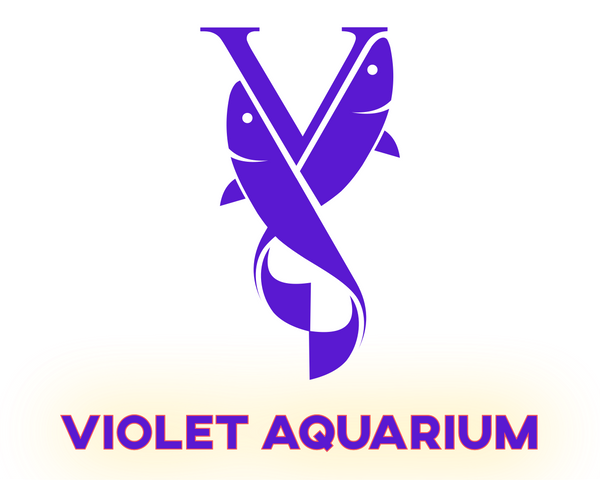2.2 Fish Treatment and Treatment Tank Set Up
Fish Treatment and Treatment Tank Set Up
Treatment Tank Set Up
- Bone dry tank that is clean and is not contaminated with parasites from other tanks
- Fill Tank with clean sterile saltwater (don’t take from your display tank) and, for the medications to work effectively you need clean water without any organic waste load
- Put an aquarium heater and keep the temp between 73 F to 75 F. We prefer lower range temp to prevent any bacterial bloom and secondary infection of fish due to it.
- Introduce a heavy Air stone so that it sinks inside the tank and aerates with an air pump. We don’t recommend power heads or any pumps in this tank as water movement alone doesn’t provide the needed oxygen and another disadvantage of power heads in this set up is that fish don’t have rockwork to hide. Fish can get caught up on the powerhead if they are weak. The air bubble movement itself moves the water enough and it works for us. So, it should work for you as well.
- No other biological or mechanical filtration is needed, and it is best to avoid it as it would complicate things in a treatment tank and spike up ammonia.
- Make sure you have enough clean saltwater as you may need to make water changes based on how polluted your water becomes. Also, we need to remove the ammonia built-up by water changes.
Treatment Process
- Treatment is an 8-day Batch process. Once when the treatment is complete after 8 days, on the 9th day you may remove the fish from the treatment tank and introduce the fish into your Quarantine or Display tank.
- During the treatment (after it has started, and day-1 is complete) don’t add any new fish. As we mentioned before this is a batch process, and only after a batch of fish treatment is complete you can start treating another batch of fish.
- Day 1- Add Copperpower or any copper medication (follow medication bottle for dosage) that works with Hanna High Range (HR) copper checker. We prefer Hanna Checker to any other test kit as Hanna checker gives a number instead of a color chart which means there is less chance of copper overdose.
- Now add Nitrofurazone (follow medication bottle for dosage) and it is very important to add nitrofurazone. When the ich or any parasite leaves the fish body they may leave an open wound and it may have a secondary bacterial infection and may kill the fish. Also, as the treatment tank doesn’t have proper biological filtration there may be a bacterial bloom that can infect fish. To prevent this from happening we need to add nitrofurazone. You may add Prazipro as well to kill any flukes (follow medication bottle for dosage).
- Don’t over feed the fish. Slightly under feed the fish during the treatment process. Avoid frozen food, seaweed etc. and keep it simply to pellets. This may help to keep your ammonia level low.
- We recommend the Hatchery Diet from Sustainable aquatics as even finicky eating fish seem to accept these pellets readily and we won’t need to pollute the water with frozen food. Keep in mind the tank doesn’t have any biological filtration so your goal should be to keep the ammonia spike to a minimum. Drop one or two pellets at a time and even before the pellet hits the bottom of the tank, the pellet should be eaten by the fish. If any pellet is laying on the floor of the tank, then siphon the left-over food immediately and if you think the water seems to be polluted then you need to do water change. Measure copper and dose as needed
- If we make any water change, then you need to measure copper, and dose copper if needed to be brought up to the recommended dosage.
- Day-2 Measure the copper and dose if it went below the recommended dosage. It is important to measure copper and dose every 12 hours in initial 3 days as copper tends to precipitate out of the water. If the copper level is lower than the recommended level, then the parasites will start to reproduce making your treatment useless. After a few days the copper level stabilizes usually. After the copper coats the surface of tank after few days, the copper level will become stable in your treatment tank and that’s what we want.
- Day-3 Inspect the water quality. It should not have too many bubbles (which indicates water is polluted) and if you think water is polluted then do a 50% water change. Whenever there is water change then copper must be measured and added if needed. Also, nitrofurazone needs to be dosed.
- Day-4 do a 40% water change and dose copper/nitrofurazone as needed. Maybe it is a good idea to feed fish before water changes than after water changes
- Day-7 Dose Prazipro again. The Day-1 Prazipro dose killed the adult and the Day-7 Prazipro dose kills the ones that hatched out of egg.
- Day-9. Your treatment is complete and now you can move the fish to your display tank or quarantine tank.
- Before we move the fish to the display tank, make a good amount of water change on your display tank and it is clean to welcome the new fish to your display tank. Keep in mind that on some occasions the fish residing in the display tank may have gotten used to the polluted water but the new fish that are introduced after treatment may not withstand it.
Note: This treatment process doesn’t kill/remove Brooklynella hostilis or Uronema etc. It is mainly intended to remove ich, velvet and flukes.
